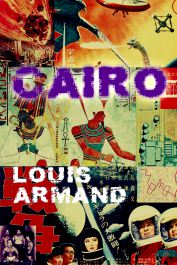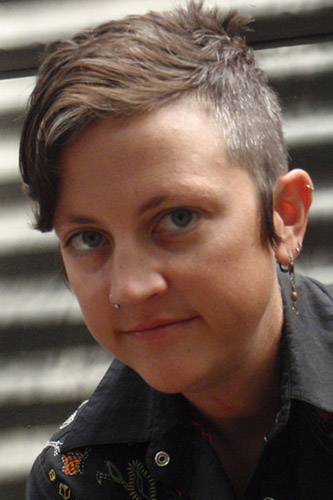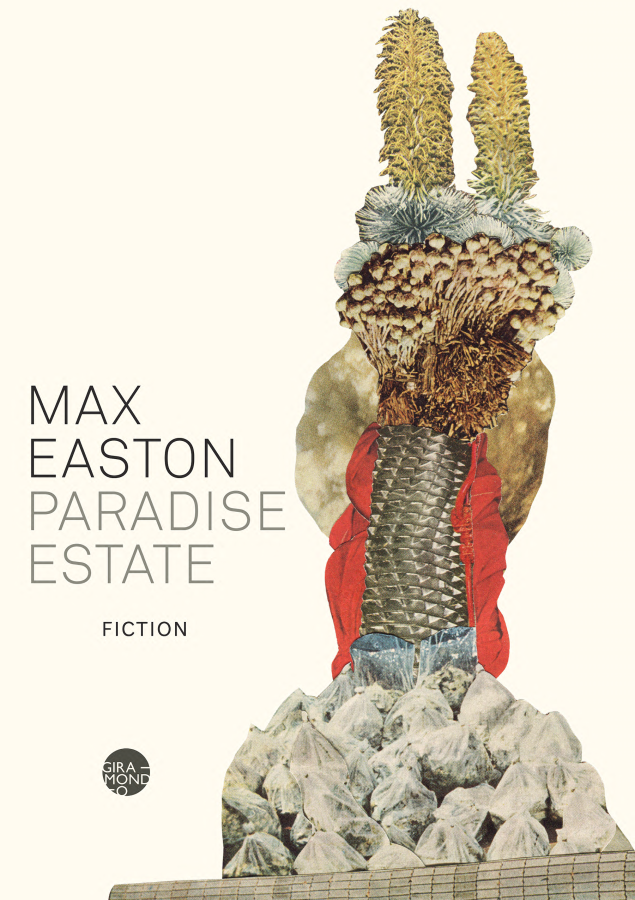Climate catastrophe, drone warfare, border fascism, corporate dictatorship, the auto-surveillance of social media, the banality of corruption, the hypocrisy of the security state and its disinformation: the world we inhabit seems to be growing into quite the Ballardian dystopia. In these conditions, the contemporary Australian literary novel seems increasingly delusional. In its conventional realist mode, it depicts peaceable, white, heterosexual, presumptuously universal families negotiating their domestic conflicts to a resolution centred on the rediscovery of individual human goodness, more or less while Rome burns. Historical fiction, memoir and thinly-veiled autobiographical fiction win our awards and top our bestseller lists. Prefabricated baddies are more popular than the present crop of contemporary corporate proto-fascists; Nazis are safely back in fashion. Political machinations are externalised, individualised, as if politics is not relevant to everyday life, or political reality is not remade daily by our actions and our imaginations.
Increasingly it seems to me that the primacy of these types of broadly realistic writing is a tyrannical form of reactionary nostalgia: an obsessive repainting of a portrait of a good Australia that bears little resemblance to its actual face. Perhaps I am simply having a version of the literary tantrum Patrick White experienced when he declared his intention, on returning to this island in the 1950s, ‘to prove that the Australian novel is not necessarily the dreary, dun-coloured offspring of journalistic realism’. The phenomenon, however, is not restricted to Australia. ‘Nonfiction has crept closer to fiction in our time in ways that are not flattering to fiction,’ wrote Rebecca Solnit in a recent essay on Virginia Woolf’s embrace of the mysterious in her writing. Almost as an aside, Solnit points to the horrors of World War I as a motive for the shock of modernism. The sheer unimaginability of that war turned great writers away from the formulas of the nineteenth century novel; Woolf recognised the need to describe the world in freshly uncertain terms. It took real trauma to burst through that barrier.
On the other hand, literature before modernism was often gothic and wildly imaginative. There were less borders between the real and the imagined, not more. The fantastical endures, but largely by inhabiting categories that exist to defuse its power. With the death of Gabriel Garcia Márquez, I was again reminded of the reach of his fiction, its ability to infiltrate so many arenas of discourse, to break out into the world. But what is also remarkable about his legacy is its enclosure within a genre. Magic realism has always been a contested genre. By definition, it is a crossing-over rather than a category, a literature that creates a bridge between indigenous and colonial world views. Simeon Slemon describes the effect thus:
This mode of narration requires the reader to read the novel in a dialectical manner, forestalling the collapse of either one of the two narrational modes into the other, but recognizing the erosion in massive and totalizing system that the dialectic effects in each. The texts thus demand a kind of reading process in which the imagination becomes stimulated into summoning into being new and liberating ‘codes of recognition’.
What magic realism seeks to do at its best is to decode the real. The imaginative does not come into play simply to make more things possible – as in the argument for science fiction’s value as a prediction machine – but to interrogate the real and its false frontiers, to make visible and cross borders. Magic realism is a post-colonial literature because it understands that those frontiers are what hold systematic oppressions in place.
By contrast, genre is an invention which reacts to transgressions by enclosing them in categories of identity. Genre thus becomes another way to reinforce the borders between the real and the imaginary. The fantastical becomes harmless, even cute. It is no coincidence that the prevalence of memoir is matched by escapist and often brutal fantasies such as Game of Thrones and The Hunger Games. The popularity of teenaged dystopias is a subject of mockery, but perhaps it is a safe way for coming generations to articulate the traumatised planet they will soon inherit.
The idea of imaginative fiction as a post-colonial force of resistance is tempting, but the tendency is weaker than it was in the freshly globalised 1990s. Post-colonial is an optimistic term, given the continuing juggernaut of enclosure and exploitation which threatens the planet’s very habitability. Just like the disappearing wilderness, the imaginary is always under pressure from the real; it is shared territory that must be fought for. Ursula K Le Guin wrote: ‘to think that realistic fiction is by definition superior to imaginative fiction is to think imitation is superior to invention.’ And there is an ideology behind that imitation. Its work is to reinforce itself: to draw a mark in the earth and build a fence along it. To keep the strangers out.
So desperate are readers for an imaginative challenge that the presence of a symbol can ignite enthusiasm for the fantastical. And yet there exists a subtle pressure on writers not to ask too much of readers’ minds, not to worry too much about ideas – a bent that is exactly what drives intelligent readers away from literary fiction. The empire of the real is in our heads.
Fences are everywhere. It has become difficult to imagine land that is not enclosed, borders that are not patrolled. Countries that have not been invaded. Why, a hundred years and countless wars past Woolf’s backgrounding influence, do so many of us write as though none of this is happening? As though Woolf or Joyce or Pynchon or Acker or Carter or even Márquez never existed? Do we blame the flattening influence of the creative writing degree, the post-Cold War retreat from radicalism, prize culture, the hard-times conservatism of the publishing industry?
I suspect it has something to do with the ideas themselves, and with a human inability or unwillingness to comprehend the challenges of the future. What we now call ‘realism’ does not go near the end times. It is a lifestyle-magazine fantasy: a fantasy of retreat into a safe, stable, morally predictable universe that is no more likely to exist than the Isle of Westeros. Literary fiction is becoming a byword for boring books built out of pleasant sentences. We read these sort of books in order to avoid the world, not to understand it. An obsession with the manufacture of the real is the mark of a culture which is desperately retreating from its own reality.
The most interesting writing is an effort, not to describe the real, but to contaminate it.
*
Louis Armand’s Cairo is, I think, aiming for just this sort of contamination. Cairo is both a futuristic dystopia and an attempt to respond to the dystopian nature of present reality. Although it appears on the surface to be a science fiction novel, it depicts a state of being that Umberto Eco described as hyperreality, in which life is experienced as a bewildering array of simulacra. This is gamer-generation fiction which invokes a sinister kind of software in place of a moral code.
Armand divides his world into five distinct but linked narratives. Cairo follows a gangster in London, a Nunga fugitive in the South Australian desert, an ice-addicted time-shifter possibly in Beijing, an accidental bounty hunter of sorts in New York, and an unnamed person who seems to be in some sort of virtual universe, haunted by something or someone called The Stranger. Each of these characters has a fragmentary hold on their identity, their body, and their sense of reality. Each faces a world filled with brutality and exploitation and numerous dead ends.
Armand’s prose, too, is fragmentary, often offering up strings of images rather than sentences, dropping the reader into an overwhelmingly visual world which is at once disorienting and familiar. It is like being surrounded by flickering screens. Each chapter is headed with a symbol denoting which of the five narrative threads we are taking up, as well as the co-ordinates of the location in which it ostensibly takes place. This is no cute sci-fi gimmick, but an indication of the technique at work, which seems borrowed from the realm of role-playing games. Each of these limited chapters is narrated in the third-person in a way that suggests another intelligence, the omniscient narrator or author, is hovering over the game, attempting to map it. It gives the whole a sense of sinister conspiracy, into which the reader is plunged but in which she is never fully immersed. This deliberate disorientation encourages multiple readings of the book, as well as multiple interpretations of its various stories.
Armand’s aesthetic world will be instantly familiar to fans of science fiction. It borrows heavily from sci-fi classics, from Ballard to Bladerunner, with a dash of The Matrix thrown in. ‘Spectral minarets flanked by giant cranes … Corporate zones, gradually propagating outwards, consuming everything’: it is a deeply cyberpunk aesthetic, a world of normalised hyper-surveillance, paranoia, shadowy corporate control and bionic surprises. The borrowing from science fiction is an affectionate gesture, but it also gives these futuristic scenes a sense of somehow being of the past. Saturated as we are in both prediction and nostalgia, this time-shifting feels intensely contemporary. If the term did not already feel dated I would be tempted to call this technique remixing.
Armand’s previous novel, Breakfast at Midnight (2012), was a compact noir narrative of traumatic violence, with a yearning for lost love at its heart. Cairo is something more ambitious, but also defined, I think, by its aesthetic choices as much as its content. As in Breakfast at Midnight, the characters all seem to be suffering from a kind of reality-trauma. They are hunted, on the run in a labyrinth of seediness, intensely uncertain. This makes for an urgency which is occasionally bewildering, though for the most part the novel is action-packed. The momentum counteracts Armand’s more cerebral obsessions with images and reiterations. His fiction is unashamedly demanding and occasionally disturbing.
There are a few missteps. Shock value wears thin in places. The most glaring errors, though, are the troubling references to ‘the dwarf’, ‘the albino’, and at a couple of points ‘the negro’, as though these were not fully human characters. It is not a minor flaw, if you are intent upon any kind of imaginative expansion, to depict as freaks those already clichéd outsiders, and a sign of a laziness of thought that is not evident in the structure or the world-building. While Lawson, a character of Nunga and American heritage, is better developed, her musings on identity and indigenous world views are often clumsily rendered. Cairo has strong echoes of Wim Wenders’ classic sci-fi epic Until the End of the World (1991), particularly in the outback scenes. Lawson’s need for a sense of home seems at odds with Armand’s project. I wondered why this character was black and what her fugitive sensibility actually meant, beyond a need to make some easy judgements about the Australian occupation – though, granted, a real live Aboriginal person is a step up from the usual trope of conveniently abandoned ghost landscapes that riddle Australian fiction.
On the other hand, contested identity is central to this novel. The fragmentary voices that criss-cross the globe work well, disorienting and re-orienting the reader. In a hundred short chapters, Cairo hypnotises with the abrupt tilts and shifts of a pinball game. Each chapter intersects in some way, building a complicated and occasionally vague plot that links satellites, virtual reality, time travel and corporate crime. None of the characters are able to escape or fully comprehend the rules of the game they are in. Those closest to the designers of this game remain sinister glimmers: the creepy De Laurentiis, a kind of cyber-pimp, or the artist Momo, making his mysterious cypher in Cairo’s streetlights (a nod to the real New Yorker of the same name who spray-painted MOMO on the streets all the way across Manhattan in 2006, a tag only visible when mapped).
Despite its limitations, Cairo is refreshingly nightmarish. It crashes like a piece of space junk into the flat, dun-coloured plain of Australian realism. It is hard to box as anything other than science fiction of the cyberpunk variety, yet it is also a work of postmodern social criticism that deliberately crosses every boundary it can find. Armand trespasses on reality and identity, asking deep questions about the expendability of the individual in the world view of those in power, making an effort to outline the shadowy nature of that power, and contaminating the real with several virulent versions of the existential mise-en-abyme. A timely reminder of what fiction can do when it chases ideas, Cairo will reward those looking for a way to escape the enclosure of realism, cutting a hole in the fence so readers can wriggle out into the more interesting and dangerous terrain of the unknown.
References
Ursula K. Le Guin, ‘The Question I Get Asked Most Often,’ The Wave in the Mind: Talks and Essays on The Writer, The Reader and the Imagination (Shambhala, 2004).
Stephen Slemon, ‘Magic Realism as Post-Colonial Discourse,’ Canadian Literature, no.116 (Spring 1988).
Rebecca Solnit, ‘Woolf’s Darkness: Embracing the Inexplicable,’ New Yorker (24 April 2014).
Patrick White, ‘The Prodigal Son,’ Australian Letters, 1.3 (1958).





